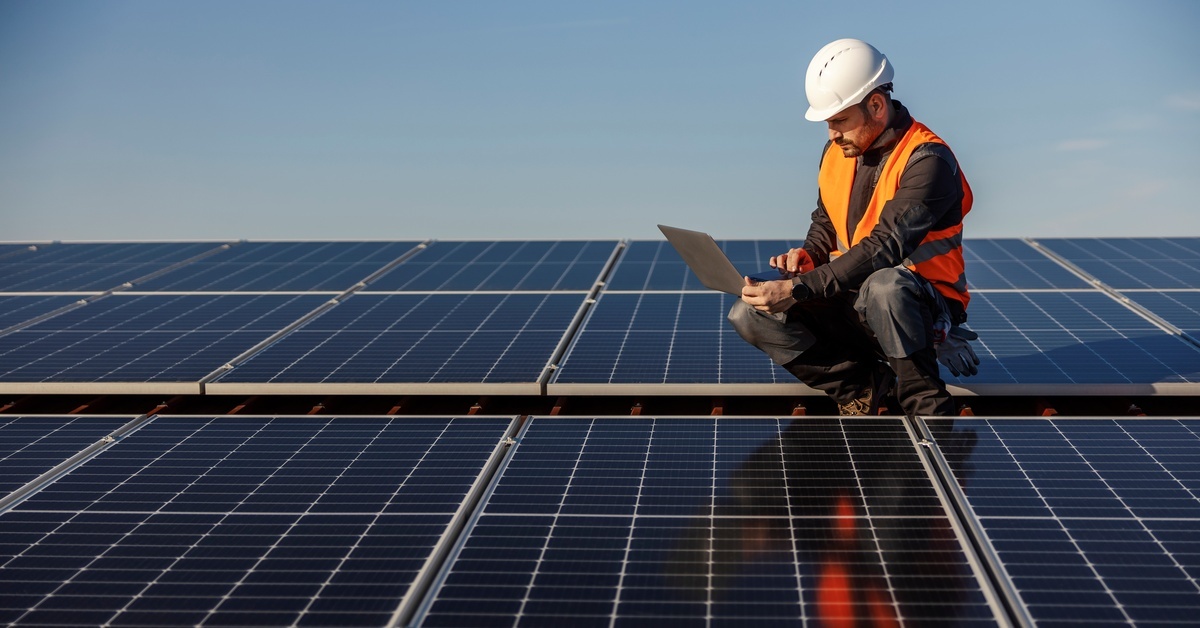Jun 24th 2025
The Future of Solar Energy: Key Project Trends
Solar energy has emerged as one of the most promising solutions to the global energy crisis. With concerns over climate change and fossil fuel depletion intensifying, solar energy is no longer just a trend but a necessity.
But what does the future hold for this rapidly advancing sector? Key project trends have shaped the future of solar energy. Sustainable energy can be a bright path forward for new solar technologies regardless of whether you work in solar energy or are just curious.
Why Solar Energy Matters
Understanding the reason behind solar energy is crucial to knowing why it is vital for the future. Global energy demands are soaring, and traditional energy sources, such as coal, oil, and gas, are not only finite but are significant contributors to greenhouse gas emissions.
Solar energy offers a clean, renewable alternative. It’s abundant, cost-effective, and continues to gain efficiency with the latest technological advancements. Today, governments and the private sector worldwide are investing heavily in solar infrastructure to achieve their long-term energy objectives.
Trends Shaping the Future of Solar Projects
Converting solar energy into electricity has led to widespread use throughout the world. The United States is a leader in solar energy production, with solar installations in nearly 40 million homes.
Energy dependency on fossil fuels will be overcome by solar energy as the market continues to grow. Therefore, renewable energy will become the main source of electricity, and with that, the technology will continue to improve.
Advancements in Solar Panel Technology
One significant trend is the push for more efficient and cost-effective solar panels. Modern photovoltaic (PV) cells have undergone significant improvements over the last decade, but there remains enormous potential for further innovation.
Perovskite Solar Cells
Perovskite technology is making waves for its high efficiency and lower production costs. Unlike traditional silicon-based solar panels, perovskite offers lightweight, flexible options that engineers can integrate into various surfaces, including windows and walls. This technology is an emerging component that businesses could incorporate into future solar projects after confirming the data.

Tandem Solar Cells
Tandem solar cells combine different types of materials, such as perovskite and silicon, to dramatically improve energy conversion rates. Scientists have proven the benefits of these cells, but they have yet to be incorporated into commercial energy projects. Current research indicates that tandem solar cells could achieve efficiency levels of up to 40%.
Declining Costs
The costs of solar energy have been decreasing in a consistent trend over the past few years. Several factors contribute to this decline, including advancements in manufacturing processes, economies of scale, and government subsidies.
For consumers, this means solar installations will soon become accessible to a broader audience, including small businesses and homeowners in less affluent regions. Larger solar projects can also see increased profits with reduced costs, which could make energy more affordable in the long run.
Integration With Smart Grids
The future of solar energy isn’t just about creating power; it’s about how the grid distributes, stores, and uses power. Smart grids, enabled by advanced sensors and data analytics, optimize energy usage while reducing waste.
Smart grids facilitate the seamless integration of solar energy into existing power systems. This means they have a two-way energy flow, meaning that you can sell the excess energy your solar panels generate back to the grid.
Solar Storage Solutions
Storage is one of the most pressing challenges for the solar energy industry. But what happens when the sun isn’t shining? Future-focused storage solutions are addressing this issue and enhancing renewable energy’s reliability.
Next-Generation Batteries
Lithium-ion batteries are currently the standard, but next-generation solutions, such as solid-state and flow batteries, promise increased storage capacity, longer lifespans, and safer operation.
Hydrogen Storage Systems
Certain technologies can store excess power as a fuel source by using solar energy to produce hydrogen. Hydrogen fuel cells could play a significant role in the transportation and heavy machinery sectors.
Floating Solar Farms
“Floatovoltaics,” also known as floating solar farms, is an emerging trend that optimizes the use of water surfaces, such as reservoirs, lakes, and even oceans. Floating installations are particularly beneficial for countries with dense populations and limited land space that communities use for other purposes.
Not only do they save land space, but floating solar farms also improve system efficiency by keeping panels cool via the water surface. With this new method of installation, solar projects can expand their available space.

AI Integration and Predictive Analytics
Artificial Intelligence (AI) is revolutionizing the management of solar farms and residential solar systems. Solar energy systems can anticipate maintenance needs with predictive analytics, forecast energy production based on weather patterns, and increase overall efficiency.
AI-driven technology also enhances consumer-related systems, such as real-time monitoring through mobile apps, resulting in improved energy management in homes and businesses.
Solar Partnerships and Community Initiatives
Collaborative solar initiatives are becoming more prevalent, offering shared solar solutions for neighborhoods or communities. These programs allow multiple households to benefit from solar power without needing individual rooftop installations.
For example, a community solar farm could generate power distributed across dozens or even hundreds of homes, splitting the costs and benefits among a broader group of homeowners.
How Solar Energy Impacts Everyday Life
They will significantly improve the accessibility of solar energy if these trends become the norm in the future. Homeowners can enjoy lower utility bills, businesses can reduce operational costs, and governments can take meaningful steps to mitigate climate change by prioritizing renewable resources. Combined with dropped costs and increasing energy efficiencies, solar energy is becoming an essential part of modern living.
Beyond the financial savings, solar energy also fosters energy independence. By generating their power, individuals and communities can reduce reliance on traditional energy grids, which are often subject to outages and fluctuating prices. This reliability is especially critical in remote or disaster-prone areas where energy access can be inconsistent.
Environmental benefits extend beyond reducing carbon emissions; they can also benefit local communities. Solar farms require less water than conventional power sources, conserving valuable resources while producing clean energy. On a regional scale, many solar initiatives also incorporate battery storage to manage excess energy production, ensuring a more efficient and eco-friendly system.
The Role You Can Play
Investing in solar energy now extends far beyond purchasing solar panels or undertaking solar projects. It’s about contributing to a global movement for sustainability. We can see the future of solar energy in the key project trends developing and making this technology more efficient.
As solar projects continue to advance and become more efficient, Get Solar Labels offers solar placards and labels to ensure compliance with safety regulations. Solar labels play a crucial role in providing safety, efficiency, and compliance with rules in solar installations. Contact us today to discover how our experts can provide the information you need regarding placards and labels for your solar projects. Together, we can power a brighter future.

